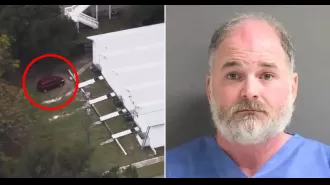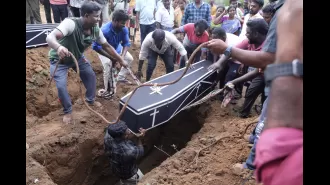New guidelines from Vatican on alleged supernatural events.
The Vatican has updated its guidelines for acknowledging supernatural occurrences, including visions of the Virgin Mary and bloody crucifixes.
May 17th 2024.

The Vatican has recently updated its guidelines on how to handle reports of supernatural occurrences, such as sightings of the Virgin Mary or crucifixes dripping with blood. These new guidelines replace the previous rules that were established in 1978. Now, instead of individual bishops making decisions on their own, they are instructed to consult with the Vatican.
The reason for these changes is to keep up with the times, as there has been a rapid spread of claims of supernatural events, particularly through online platforms. The Vatican's doctrinal office has made these changes in an effort to respond to this trend. The document was released on Friday, and it aims to allow for faster decision-making while also respecting popular devotion.
Under the previous guidelines, a local bishop could quickly declare a phenomenon as supernatural, only to have the Holy Office later express a different decision. In other cases, one bishop may deem an occurrence as supernatural, while their successor may have a different conclusion. The new guidelines state that, as a general rule, it is not the bishops' or church officials' role to declare whether an alleged phenomenon is supernatural or not. This decision is left to the Pope.
Cardinal Victor Manuel Fernandez, the head of the Dicastery for the Doctrine of the Faith (DDF), explained to reporters that these events often bring about spiritual growth, faith, and devotion among the faithful. They have even led to the establishment of shrines around the world that are central to many people's religious practices today. He cited the Marian shrine in Lourdes, France, as a positive example.
However, the cardinal also acknowledged that some alleged events are driven by personal interests, such as profit, power, or fame, and may even cause harm to the faithful. In extreme cases, these events can result in exerting control over people or committing abuses. To prevent such situations, the new guidelines state that bishops should issue a "nihil obstat," which allows for worship but leaves the decision on whether the activity is "supernatural" to the Vatican. Cardinal Fernandez emphasized that this recognition would be very rare.
Bishops now have various options to handle alleged supernatural events, including formally rejecting them or limiting worship of them if there are doubts. The guidelines also state that those who spread false claims may face sanctions from the Church.
When making a conclusion, the Church will consider positive criteria such as the credibility and reputation of those reporting the occurrence, while negative criteria include errors or personal interests driving the claims. One case still under review by the Vatican is the alleged Marian apparitions in Medjugorje, Bosnia and Herzegovina. Cardinal Fernandez told reporters that these claims would be studied according to the new norms. It is said that the Virgin Mary appeared there in 1981.
The reason for these changes is to keep up with the times, as there has been a rapid spread of claims of supernatural events, particularly through online platforms. The Vatican's doctrinal office has made these changes in an effort to respond to this trend. The document was released on Friday, and it aims to allow for faster decision-making while also respecting popular devotion.
Under the previous guidelines, a local bishop could quickly declare a phenomenon as supernatural, only to have the Holy Office later express a different decision. In other cases, one bishop may deem an occurrence as supernatural, while their successor may have a different conclusion. The new guidelines state that, as a general rule, it is not the bishops' or church officials' role to declare whether an alleged phenomenon is supernatural or not. This decision is left to the Pope.
Cardinal Victor Manuel Fernandez, the head of the Dicastery for the Doctrine of the Faith (DDF), explained to reporters that these events often bring about spiritual growth, faith, and devotion among the faithful. They have even led to the establishment of shrines around the world that are central to many people's religious practices today. He cited the Marian shrine in Lourdes, France, as a positive example.
However, the cardinal also acknowledged that some alleged events are driven by personal interests, such as profit, power, or fame, and may even cause harm to the faithful. In extreme cases, these events can result in exerting control over people or committing abuses. To prevent such situations, the new guidelines state that bishops should issue a "nihil obstat," which allows for worship but leaves the decision on whether the activity is "supernatural" to the Vatican. Cardinal Fernandez emphasized that this recognition would be very rare.
Bishops now have various options to handle alleged supernatural events, including formally rejecting them or limiting worship of them if there are doubts. The guidelines also state that those who spread false claims may face sanctions from the Church.
When making a conclusion, the Church will consider positive criteria such as the credibility and reputation of those reporting the occurrence, while negative criteria include errors or personal interests driving the claims. One case still under review by the Vatican is the alleged Marian apparitions in Medjugorje, Bosnia and Herzegovina. Cardinal Fernandez told reporters that these claims would be studied according to the new norms. It is said that the Virgin Mary appeared there in 1981.
[This article has been trending online recently and has been generated with AI. Your feed is customized.]
[Generative AI is experimental.]
0
0
Submit Comment





